How to Build a Cleared Talent Pipeline for Government Contracts
Updated June 2025 • Reading time ≈ 15–18 minutes
Introduction
In the world of federal contracting, timing is everything—and nowhere is this more true than in recruiting. Whether you’re pursuing a recompete, planning for option-year transitions, or ramping up a new program, your ability to deliver cleared, qualified candidates within days (not weeks) can be the difference between winning or losing. Building a proactive talent pipeline is the answer. But doing this in the cleared space—where candidate supply is limited, and compliance is non‑negotiable—requires strategy, systems, and sensitivity.
1. Why Cleared Talent Pipelines Matter
Most defense contractors approach recruiting reactively—jobs get posted after award. The problem? TS/SCI engineers, proposal writers, and security-cleared analysts often have multiple offers and short decision windows. By the time you post the role, the best candidates are already gone.
- Speed = Advantage: Candidates are more likely to accept offers from companies that already had them in their network.
- Compliance = Control: A known pool of cleared talent reduces the risk of bad hires or adjudication delays.
- Pricing Accuracy: Knowing your candidate expectations helps build competitive, accurate labor rates.
2. Step 1: Define Contract Talent Requirements
Start with the end in mind. Review RFPs, past performance docs, and contract scopes to define:
- Clearance levels: TS, TS/SCI, CI Poly, FSP?
- Location-based constraints: OCONUS, CONUS, hybrid?
- Skill overlaps: Can SIGINT overlap with HUMINT or ELINT?
- Certifications: IAT II/III, PMP, CISSP?
Bonus Tip: Collaborate with capture managers, proposal writers, and program leads to align requirements with delivery and pricing.
3. Step 2: Build a Strategic Sourcing Map
Once you know what you need, map out where those candidates are and how to reach them. Don’t rely solely on LinkedIn or clearance job boards.
- Attend cleared job fairs in key markets like DC, Huntsville, Tampa, and Colorado Springs.
- Use veteran transition programs and DOD SkillBridge connections.
- Partner with niche recruiters that specialize in the intel or cyber space.
- Search FOIA-cleared contractor databases for past awardees and personnel types.
4. Step 3: Engage Talent Before You Need It
Reach out to candidates proactively. The goal isn’t to hire them right away—it’s to make the first handshake before your competitors do. This can look like:
- “We’re bidding on a program in your skill area—can we keep in touch?”
- “Would you be open to a contingent offer in the next 30–60 days?”
- “We’ve placed candidates like you at [Program Name]—can I flag you for future work?”
This shows respect, builds trust, and gives you a head start post-award.
5. Step 4: Screen for Clearance + Fit
Screening shouldn’t just be about technical skills—it should include clearance scope, adjudication recency, polygraph type, and cultural fit for the program. Build a structured candidate intake that includes:
- Active/in-scope clearance check
- Program types and contract familiarity
- Willingness to relocate or deploy
- Behavioral fit (especially in fast-paced, high-risk environments)
6. Step 5: Maintain Warm Pipelines
Don’t ghost your cleared candidates. Keep your pipeline engaged—even when you’re not actively hiring. Send:
- Quarterly updates on awarded contracts
- Invites to resume review or virtual cleared job mixers
- Pre-clearance and transition coaching (this builds loyalty)
7. Tools & Tech for Managing a Pipeline
Build your pipeline into something scalable and searchable. Recommended tools:
- CRM: Loxo, Bullhorn, or Crelate for relationship tracking
- ATS: ClearanceJobs ATS, Workable, or Greenhouse GovCon editions
- Compliance layer: Ensure your storage and background collection is NIST/DFARS compliant
- Tagging system: Label talent by clearance, contract relevance, region, and proposal availability
8. Common Mistakes to Avoid
- Waiting until award to recruit: This often costs you cleared talent and credibility.
- Assuming resumes are current: Always validate clearance status, relocation ability, and contract timelines.
- Failing to differentiate: Talent won’t remember you unless you provide value and regular engagement.
- Overlooking proposal-experienced staff: These candidates bring more than just skills—they bring win potential.
Final Thoughts
Building a cleared talent pipeline isn’t a luxury—it’s a requirement. From intel analysts to red team cyber experts, talent is scarce, and mission timelines are unforgiving. Start early. Track with intent. Engage with care. Whether you’re a small 8(a) firm or a large defense integrator, the time you invest in your talent pipeline will come back in wins, retention, and competitive edge.
Need help operationalizing your cleared recruiting? Three Cords Talent offers RPO, surge staffing, and embedded proposal talent solutions built for the defense sector. Let’s build your pipeline together.
Categories
- Career Advice (1)
- Defense Hiring Strategy (1)
- Industry Insights (1)
